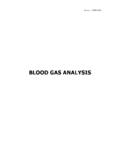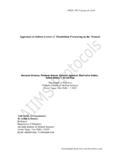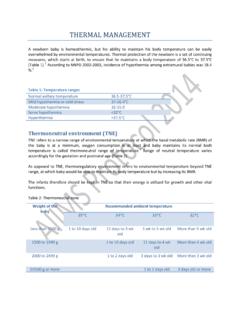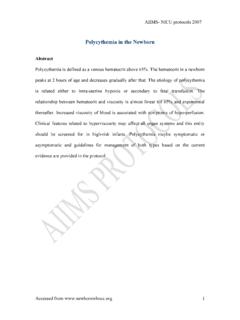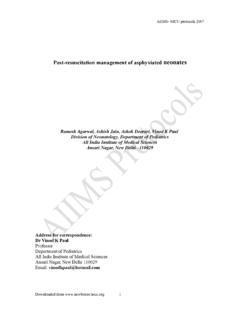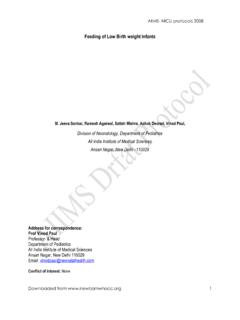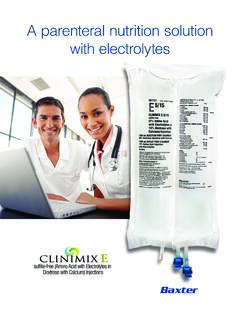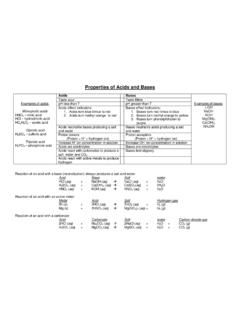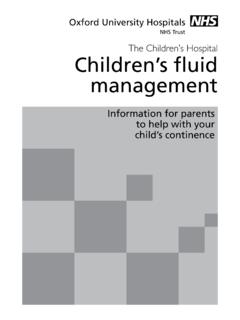Transcription of Fluid and electrolyte management - newbornwhocc.org
1 AIIMS- NICU protocols 2008 Fluid and electrolyte management in term and preterm neonatesDeepak Chawla, Ramesh Agarwal, Ashok Deorari, Vinod K Paul Division of Neonatology, Department of PediatricsAll India Institute of Medical SciencesAnsari Nagar, New Delhi 110029 Address for correspondence:Dr Ashok K DeorariProfessorDepartment of PediatricsAll India Institute of Medical SciencesAnsari Nagar, New Delhi 110029 Email: from AIIMS- NICU protocols 2008 AbstractDisorders of Fluid and electrolyte are common in neonates and a proper understanding of the physiological changes in body water and solute after birth is essential to ensure a smooth transition from the aquatic in-utero environment.
2 The newborn kidney has a limited capacity to excrete excess water and sodium and overload of Fluid or sodium in the first week may result in morbidities like necrotizing enterocolitis, patent ductus arteriosus and chronic lung disease. Simple measures like use of transparent plastic barriers, coconut oil application, caps and socks are effective in reducing insensible water loss. Guidelines for the management of fluids according to birth weight, day of life and specific clinical conditions are provided in the protocol. Downloaded from AIIMS- NICU protocols 2008 Disorders of Fluid and electrolyte balance are among the commonest derangements encountered in preterm and critically sick neonates.
3 The aim of Fluid and electrolyte therapy is to ensure a smooth transition from the aquatic in-utero environment to the dry ex-utero environment. Changes in body water and solute after parturitionAfter birth, there is efflux of Fluid from the intracellular Fluid (ICF) to the extracellular Fluid (ECF) compartment. This increase in the ECF compartment floods the neonatal kidneys eventually resulting in a salt and water diuresis by 48-72 hours. Loss of this excess ECW results in physiological weight loss in the first week of life. Since the ECW compartment is larger in more preterm neonates, the weight loss is greater in preterm neonates.
4 Term infants are expected to loose up to 10% of their birth weight as compared to 15% weight loss in premature neonates. Failure to loose this ECF may be associated with morbidities like patent ductus arteriosus (PDA), necrotizing enterocolitis (NEC) and chronic lung disease (CLD) in preterm neonates. Renal function Kidneys in the neonate have a limited capacity to excrete both concentrated and dilute urine. The physiological range for urine osmolality in neonates varies from a lower limit of 50 mmol/L to an upper limit of 600 mmol/L in preterms and 800 mmol/L in term infants2. An acceptable osmolality range of 300-400 mmol/L would correspond to a daily urine output of 2-3 ml/kg/hr.
5 Downloaded from AIIMS- NICU protocols 2008 The neonatal kidney has a limited capacity both to excrete and to conserve sodium. Normally there is a salt and water diuresis in the first 48-72 hours of life. Therefore, sodium supplementation should be started after ensuring initial diuresis, a decrease in serum sodium or at least 5-6% weight loss2-5. Also, failure to supplement sodium after the first week of life would result in low body stores of sodium. Preterm neonates have a limited tubular capacity to reabsorb sodium and hence have increased urinary losses.
6 Sodium requirement ranges from 3-5 mEq/kg/day in preterm neonates after the first week of life. Failure to provide this amount of sodium may be associated with poor weight gain2,6,7,8. Very low birth weight infants on exclusive breast-feeding may need sodium supplementation in addition to breast milk until 32-34 weeks corrected losses In addition to mandatory water loss by the kidneys and gastro-intestinal system (termed as sensible loss), additional water losses occur due to evaporation from the skin and respiratory tract. This water loss is termed as insensible water loss (IWL). Insensible water losses tend to be higher in preterm infants (see Table 1).
7 Evaporation loss through the skin usually contributes to 70% of IWL1. The remaining 30% is contributed through losses from the respiratory tract. Various environmental and neonatal factors have been implicated in excessive insensible water losses through the skin and respiratory tract (see Table 2). The emphasis in Fluid and electrolyte therapy should be on prevention of excessive IWL rather than replacement of increased IWL. Hence incubators, plastic barriers and heat shields should be used liberally in the management of extremely premature from AIIMS- NICU protocols 2008 Transparent plastic barriers reduce IWL in preterm infantsThin, transparent plastic barriers ( cling-wrap) may be used to increase the local humidity and limit air movement.
8 These transparent plastic films may be fixed to the supporting walls of the radiant warmer in order to create a micro-environment around the baby. These plastic barriers are effective in reducing IWL without interfering with the thermal regulation of the warmer. They have been found to reduce the IWL by 50-70% for infants under the radiant warmer1. We have found the use of these barriers to be quite effective in avoiding excessive IWL in preterm neonates being nursed under the radiant warmers. Guidelines for Fluid and electrolyte therapy Day 1: Term babies and babies with birth weight > 1500 grams.
9 A full term infant on intravenous fluids would need to excrete a solute load of about 15 mosm/kg/day in the urine. To excrete this solute load at a urine osmolarity of 300 mosm/kg/day, the infant would have to pass a minimum of 50 ml/kg/day. Allowing for an additional IWL of 20 ml/kg, the initial fluids should be 60-70 ml/kg/day. The initial fluids should be 10% dextrose with no electrolytes in order to maintain a glucose infusion rate of 4-6 mg/kg/min. Hence total Fluid therapy on day 1 would be 60 ml/kg/day. It is provided as 10% dextrose (see Table 3)Day 1: Preterm baby with birth weight 1000-1500 grams.
10 The urine output in a preterm baby would be similar to a term baby. However, the Fluid requirement will be higher due to increased IWL and increased weight loss (extracellular Fluid loss). We Downloaded from AIIMS- NICU protocols 2008recommend the liberal use of caps, socks and plastic barriers to reduce the IWL under the radiant warmer. Using this method we have found 80 ml/kg/day of 10% dextrose to be adequate on day 1 of life (see table 2).Day 2 - Day 7: Term babies and babies with birth weight >1500 grams.
